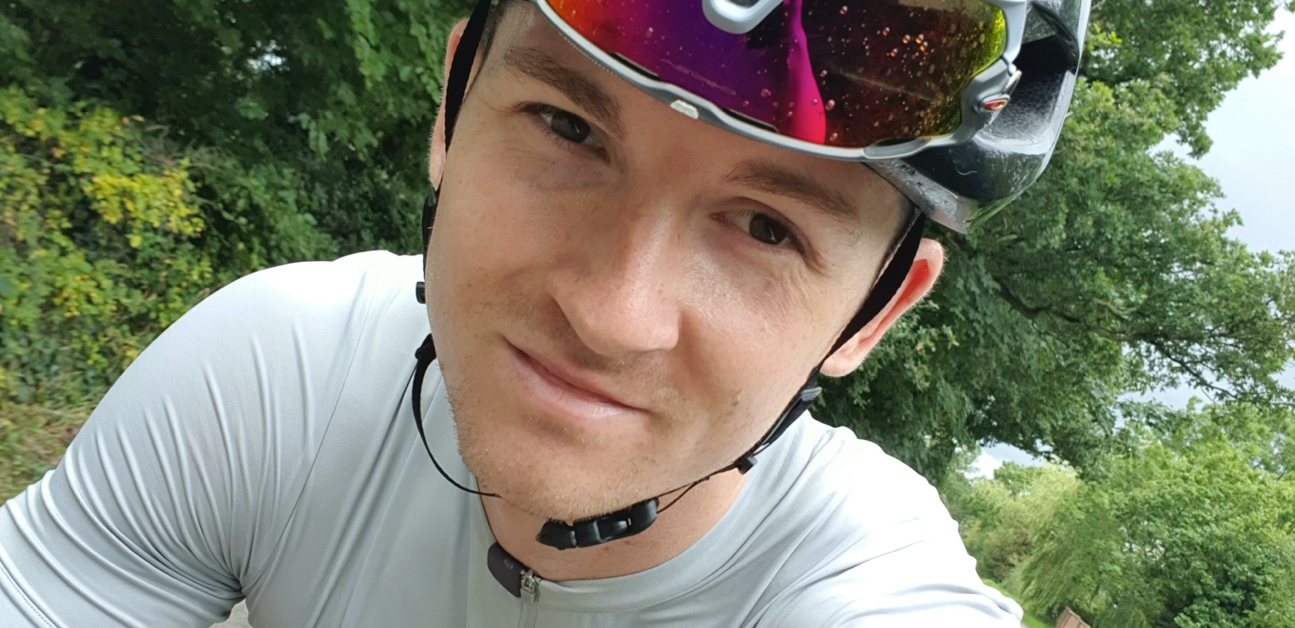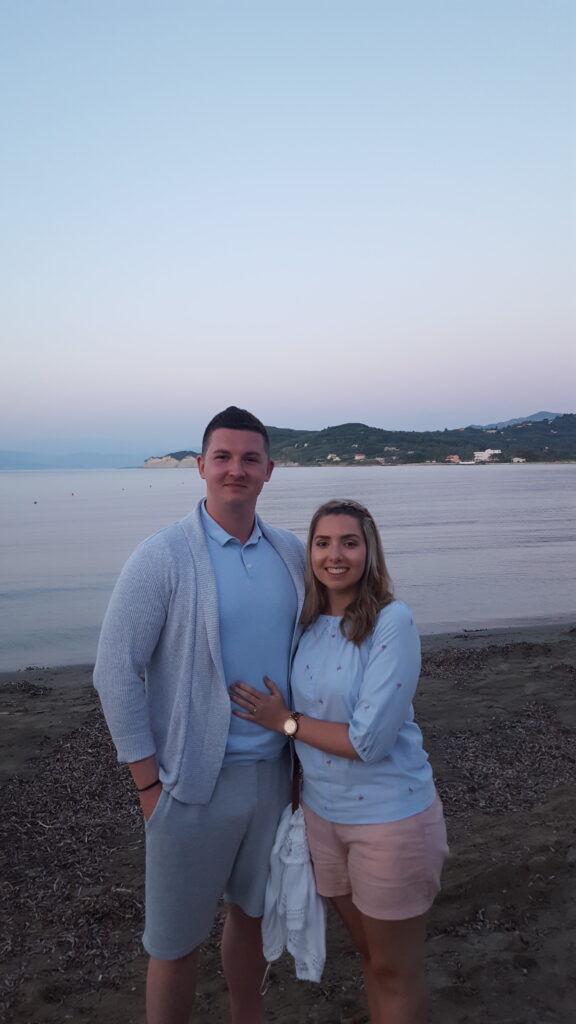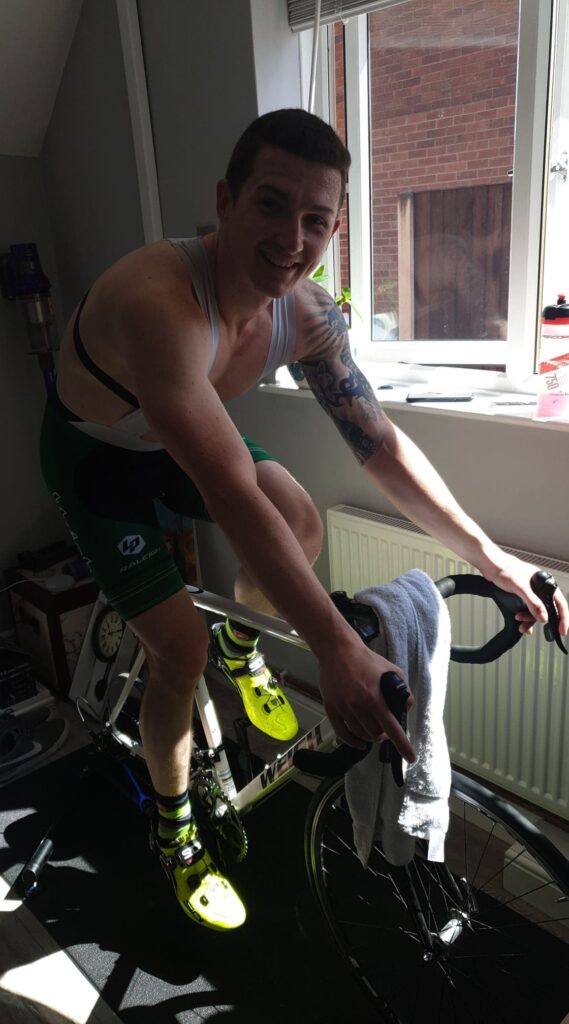How Structured Training Can Improve Your Power to Weight Ratio

There comes a point in a cyclist’s progression where unstructured distance isn’t enough to stimulate improvement. Jozsef Evans used structure and performance-based goals to continue his progression and get faster. In a matter of a few months, the structure paid off and helped Joe increase his watts per kilogram from 3.1 to 4.2. Here’s how Jozsef did it.
Share your success story and tell us how TrainerRoad helped you reach your goals.
Jozsef’s Athletic Journey
Growing up, Jozsef was involved in a lot of power-based sports. He played rugby in middle school and continued playing through college and began weight lifting when he was sixteen. He maintained a consistent weight lifting routine into his early twenties and even got involved with some power lifting.
While he enjoyed success in the gym setting power lifting PR’s and reaching weight goals, there came a point where he knew he wanted something different. The years of consistent weight lifting and power-based sports led to a lot of muscle mass and, in Jozsef’s eyes, some unwanted weight as well. Standing at six feet and three inches, Joe’s highest recorded weight was 260 pounds. When he got engaged to his fiance in 2017 and saw the engagement photos, he decided he wanted to make a change. So he set out to pursue weight loss and body composition goals.

Jozsef began looking for an activity that would help him lose weight and reach his personal goals around physique and body composition. He started with running but didn’t really like it, so he began looking for alternatives. When researching cardio activities, he discovered that coffee shop rides and “cake stops” were a prevalent part of road cycling culture. With that in mind, he thought might as well give it a go and get some coffee along the way.
You can Do More Than You Think!
After Joe’s first ride, he quickly recognized that cycling was no cakewalk. The hills were steep, and the fitness he had built in the gym wasn’t great for endurance activities. But despite the pain and even a clipped pedal at the end of the ride, Joe had a ton of fun. He started to get out more frequently and work on building his endurance with some ten and fifteen-mile loops.
Joe’s big breakthrough moment happened when he connected with some local cyclists on Facebook and started joining them for some longer group rides. The group helped him progress and take on longer distances than the ten and fifteen-mile loops he had been doing. Jozsef was feeling very accomplished after the group got him out on his first forty-mile ride when they suggested that he join them for a century the following weekend.
Adaptive Training
Get the right workout, every time with training that adapts to you.
Check Out TrainerRoadWith just two months of experience under his belt, Jozsef was more than a little doubtful that he’d be able to ride a full century. At the time, he felt like it wasn’t even physically possible. But he joined them anyway. The following weekend he proved himself wrong and finished the whole thing—one hundred miles and seven thousand feet of vertical gain. Jozsef felt like finishing that ride was a huge turning point for him. He thought, “Wow, if I can do this, what else can I do that I thought I couldn’t do.”
Setting New Goals
What had started as a pursuit for weight loss was quickly turning into much more. He continued to go on more rides and would join that same group for long-distance routes most weekends. With healthier eating habits and frequent exercise, he continued to make progress with his weight loss goals and lost forty pounds.

As he continued to progress, his goals around weight became less of a priority while his performance-based goals became more important. “I was getting fitter, and I was getting faster, and I wanted to see where I could go with it” With new performance-based goals at the front of his mind, he knew he needed a more methodical approach if he wanted to meet these new goals.
Getting Started With Structure
When Joe got a smart trainer in October of 2019, he decided he’d try a power-based, structured training plan. After doing some research, he decided to use TrainerRoad. Joe said he was drawn to the science-based approach of the TrainerRoad training plans and felt confident it would help him reach the next step in his progression.
Jozsef took his first Ramp Test later in December and came out of the assessment with a 305 FTP. With his weight around 220 pounds, this put his watts per kilogram around 3.1 W/Kg
While he still had some weight loss goals he wanted to work towards, Jozsef shifted his primary focus towards performance. He got into the groove of training and focused on dedicating himself to nailing his plan and staying consistent with the indoor workouts as much as possible. Joe works a pretty demanding work schedule with a mixture of day shifts and night shifts, so the efficiency of the TrainerRoad workouts and the ability to choose which days he can train really helps him maintain consistency.
Nutrition and a New FTP
It turns out, less intentional focus on diet and weight didn’t have a negative effect on his cycling weight loss goals either. Instead, Joe found that with more frequent high-quality work, he doesn’t need to be so strict with his diet. Within his first year of cycling, Joe did a lot of calorie counting and food journaling to make sure he maintained a caloric deficit. Keeping the food journal was helpful in the sense that it helped him learn more about himself and the unhealthy habits that he had, but it wasn’t always the best thing for his training.
Now with more work being done, he tries to focus on the quality of what he’s eating more than the quantity. If he can be accountable about fueling his work and eating high-quality foods, it frequently puts him in an appropriate caloric deficit. In turn, with consistent training and a healthy diet, Joe has been able to lose forty additional pounds in the last ten months. He now weighs 181 pounds with an FTP of 348, which puts his weight to power ratio at 4.2.
Get Faster for Group Rides!
Weight loss was the catalyst for change, but performance-based goals and structured training are what helped Joe increase his power to weight ratio and ultimately become a faster cyclist. The evolution from weight loss to performance was what helped him get faster and make the giant leap from a 3.1 power to weight ratio to a 4.2 power to weight ratio.
Even though structure is now an important part of his training regimen, Joe still enjoys getting out on plenty of group rides with his friends. The only difference now is that he has the work, the power, and the fitness to go on bigger rides while doing them better and faster.
Tell us your story. Success isn’t always a race win. It can be life-changing health improvements, reaching a personal goal, or more.
For more cycling training knowledge, listen to Ask a Cycling Coach — the only podcast dedicated to making you a faster cyclist. New episodes are released weekly.